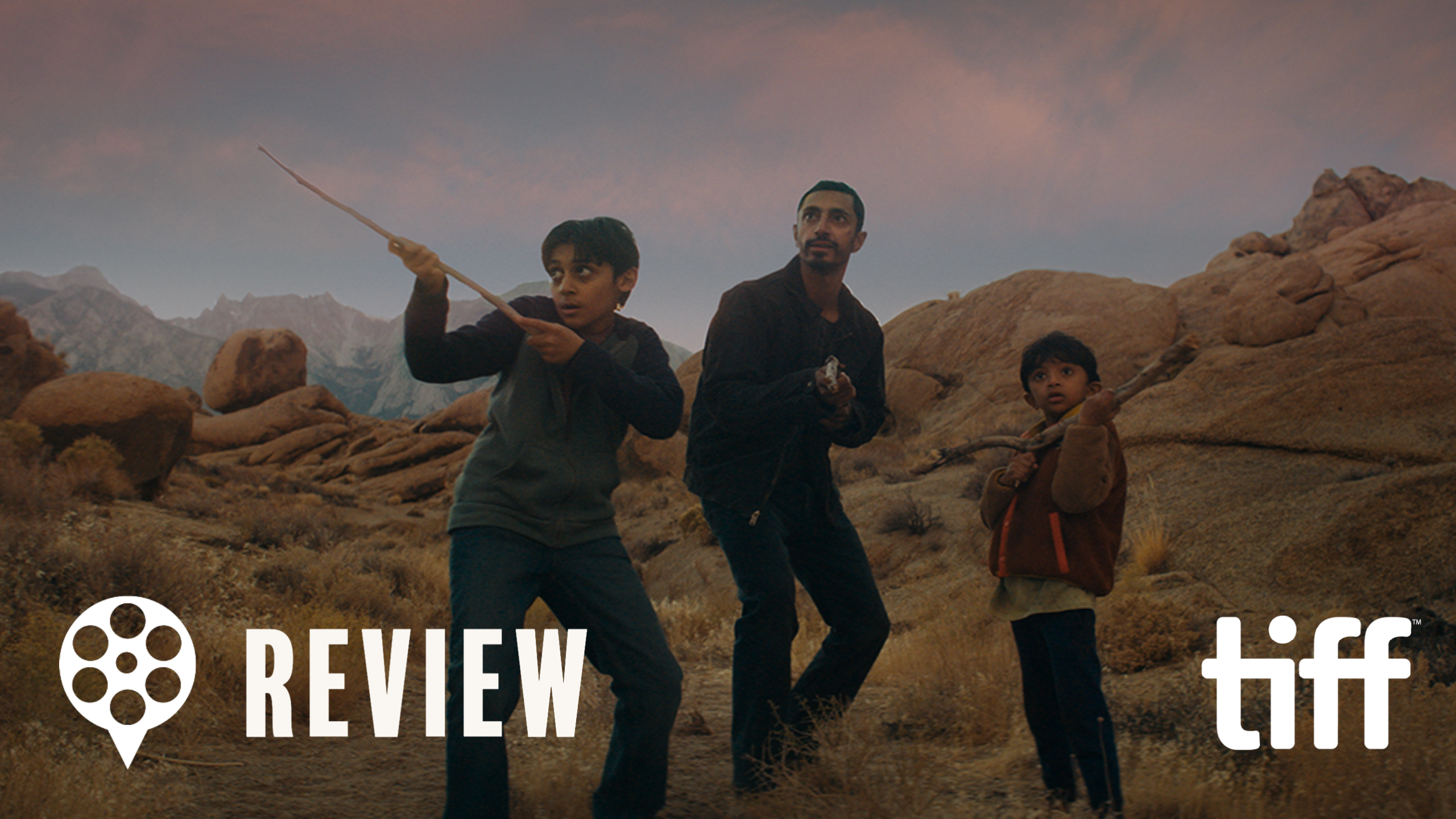The real monster in this latest take on the classic story of The Invisible Man isn’t the title character himself but the dangers of a toxic and abusive relationship. There are typical horror tropes to be found here, and writer/director Leigh Whannell is a real pro at exploiting them to put the audience on the edge of their seats. Still, real-life horror is always more frightening, and it’s this smart balance that makes The Invisible Man one of the better horror films to come out in quite some time.
The Invisible Man is best known as one of Universal Pictures’ most famous movie monsters dating back to 1933, but his roots go back to the 1897 H.G. Wells novel that inspired it. Instead of creating a complete retread, Whannell makes the wise decision of putting the focus on the victim and having the audience discover how far a man could go if he had the means to stalk said victim and remain unseen. What if the escape from the clutches of a controlling and abusive relationship wasn’t the end of it? What if your abuser wanted to maintain control by driving you so crazy it alienates everyone closest to you until you’re completely alone and within their power again? That’s the angle that Whannell has chosen to take with his iteration and to consider toxic masculinity and the abuse of women by powerful men is a very topical current event. It makes the release of The Invisible Man all the more poignant as a conversation starter while also functioning as a pure exercise in horror.
When we enter the film, Cecilia (Elisabeth Moss) is a woman trying to escape. We don’t need a series of setup scenes to understand why she’s on the run because as she tries to make her silent escape from the home, she shares with her boyfriend Adrian (Oliver Jackson-Cohen), we can tell behind its lavish walls lies a prison. Cecilia’s exit doesn’t go unnoticed, but she does get out with the help of her sister Emily (Harriet Dyer). Two weeks later, Cecilia is staying with her good friend James (Aldis Hodge); and James’ teenage daughter, Sydney (Storm Reid). Cecilia is so afraid of Adrian that she hasn’t left James’ home in two weeks, but soon her sister arrives with news that Adrian has committed suicide, and she can finally be free. Once Cecilia starts to see some signs of independence, she is contacted by Adrian’s brother Tom (Michael Dorman), who is the lawyer over Adrian’s trust. Adrian has left Cecilia $5 million, and she’ll be paid out $100,000 a month for four years if she doesn’t commit any criminal acts or give reasons to show she’s mentally incompetent. It isn’t long because Cecilia feels like a familiar presence is watching her, and she begins to believe that Adrian has found a way to stalk her without being seen. Still, it’s a notion that makes her loved ones question her sanity.
The best scene in all of The Invisible Man is the opening sequence that showcases Cecilia’s escape. It’s not a scene rooted in supernatural horror but in genuine fear and desire to escape a toxic situation. The sequence is masterfully orchestrated, from the use of surveillance footage to the panning of a camera to a seemingly empty space, Whannell knows how to use every aspect of the camera to create an unsettling atmosphere. We’ve only known Cecilia for mere moments as this sequence takes place, but we become invested in her getting out.
That doesn’t mean that Whannell can’t give us traditional moments of horror that work. Several scenes build tension until they’re ready to pop, which makes for a very unsettling experience throughout the film. Whannell knows the fear is in all the quiet moments, and while there are some jump scares to be had, he doesn’t overuse them, and the ones he does utilize, he certainly earns. One gasp-worthy moment at the midpoint of the film had me second-guessing if I saw what I saw, and it got a massive reaction from the crowd I saw it with.
The invisibility sequences, particularly any involving physical action between what we see and don’t see, are completely top-notch. It would be easy for the actors to look silly fighting with air, but they make it look like they’re fighting a physical presence. A moment with Cecilia fighting an invisible Adrian in the kitchen is a prime example of how well those scenes are constructed, and an action-filled sequence at a mental hospital between armed guards and an unseen presence is also a highlight. A pulse-pounding score by Benjamin Wallfisch enhances all of these scenes amplifying several key moments.
While Elisabeth Moss is adequately supported by the likes of Aldis Hodge and Storm Reid, this is her movie from top to bottom. She instantly earns our sympathy, and her level of fear and anxiety is palpable. It’s a role that requires a full range of emotions, and she never misses a beat. I know it’s early in the year, and horror is hardly recognized for awards, but Moss should not be forgotten at the end of the year. The main reason the film works is because of Moss’ dedication to the role and her ability to keep us with her every step of the way.
Whannell’s ability to balance the fantastical with what’s reality should be commended. We never question the presence of the technology that Adrian uses to become invisible because he grounds it with a bit of reality. He finds a necessary balance to appease genre fans while also putting a lens on a genuine problem. Part of what makes this adaptation of The Invisible Man narrative so gripping is that it’s just as much a story about the dangers of toxic relationships and emotional abuse as it is a horror film with supernatural elements. Cecilia has endured being with someone who has broken her spirit and made her dependent on him through emotional and physical abuse, not to mention toxic gaslighting. All the elements of violence are there, especially removing her support system, so he believes her only choice is to go back to him. Horror is sometimes viewed as a genre with nothing to say and a senseless narrative, but The Invisible Man turns that on its head and delivers on giving you something to talk about while also making you sink into your seat in dread.






